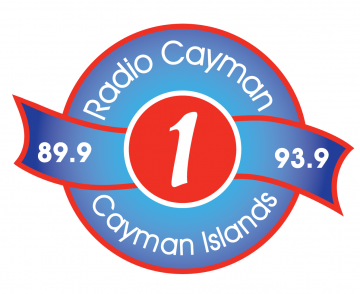News
OfReg Board’s Response to CUC’s Press Release on Power Shedding

The Board of the Utility Regulation and Competition Office (“OfReg”) have carefully considered the recent press release and statements in the press, and have determined that in order to fully and accurately inform the public in respect of the matters raised by CUC, as well as to assure the public that we are fully cognizant of our duties to the public and committed to properly discharging the same, we would publish our position on these matters, as outlined below.
Caribbean Utilities Company Ltd (“CUC”) is licensed to exclusively provide the transmission and distribution of electricity to consumers in Grand Cayman, which electricity is either generated by CUC, under their separate non-exclusive generation licence, or by other licensed generators.
These two licenses, namely their exclusive “T&D Licence” and their non-exclusive “Generation Licence”, were granted by the-then government in April 2008, after some two years of negotiation between CUC and Government. The current legislative framework and CUC’s licenses only provide for an opportunity for competition in regard to the generation of electricity and not for transmission or distribution, as CUC currently enjoys the exclusive right to provide those things under their T&D Licence.
These two licenses together set out the terms of CUC’s responsibilities and obligations to their consumer base, and the licenses are underpinned by the legislative framework which firstly gave the authority for regulation of CUC to the Electricity Regulatory Authority (“ERA”). With the advent of the Utility Regulation and Competition Law (now “Act”), which legislation amalgamated the regulation of electricity, fuels, ICT and water, the responsibility for regulating CUC was handed over in 2017 to the Utility Regulation and Competition Office (“OfReg”).
Currently, in Cayman, large scale electricity generation falls into two primary categories:
- “Firm” (available upon demand at any time of the day) generation, which is currently exclusively created by CUC’s fleet of diesel generators, and;
- “Non-Firm” renewable generation which can either be initiated by or permitted by OfReg, which permission is not subject to the competitive bidding process and requires the generator to provide electricity to CUC’s grid under an OfReg approved Power Purchase Agreement (“PPA”).
- is important to note that currently there is no large-scale renewable generation that can be considered as “firm” power in the context of either the CUC Licenses or the legislative framework, since, based on existing available technology, such generation is reliant on either sunshine or wind, neither of which is readily available around the clock every day. This is not to say that large scale renewable energy should not be a part of Cayman’s generation capacity, just that it cannot be considered “firm” power in the context of the current CUC T&D Licence, which the Board is of the view needs updating.
It is also important to note that because CUC was given exclusivity to provide T&D to the island of Grand Cayman, they, as the T&D provider, have been given the responsibility under Condition 4 of that Licence to procure and to dispatch sufficient Generating Capacity to meet the system requirements.
Generating Capacity is defined in the CUC T&D Licence as: “the maximum Generating Capacity (measured in megawatts MW), that is available from the Licensee's Generating Sets pursuant to its Generation Licence and the Generating Capacity available from the other Generation Licensees pursuant to the PPA’s.”
Conditions 4.1 to 4.4 of the CUC T&D Licence reads:
“Condition 4: Obligation to dispatch Generating Capacity
4.1 The Licensee shall be responsible for dispatching sufficient Generating Capacity to meet system requirements in a prudent manner, taking into consideration various operating considerations, including but not limited to least-cost, planned generator maintenance schedules and operating reserves (both on-peak and off-peak) and subject to the terms and conditions of the PPAs.
4.2 The Licensee may purchase some or all of its power requirements from Generation Licensees other than itself pursuant to the PPAs.
4.3 The Licensee shall purchase the electricity output from any potential non-firm waste-to-energy facility on an energy only basis in accordance with the provisions for renewable resources described in Condition 32.
4.4 The Licensee is responsible for the procurement of adequate generation supply, in terms of required energy, capacity and ancillary services to fully meet the needs of its Consumers, subject to the application of the Generation Solicitation Process.”
It is therefore clear from Condition 4.4 that it is the responsibility of CUC to procure adequate generation, either by producing or buying firm power and to supply that electricity to consumers through its exclusively owned grid and it can also supply any complement of renewable energy that is generated under an arrangement authorized by OfReg.
Furthermore, it is CUC’s sole responsibility to forecast what power is needed. Where such forecasting predicts additional firm electricity capacity will be needed in the future, CUC is required to issue a Certificate of Need (“CON”) to OfReg, which will then trigger the competitive “Generation Solicitation Process”.
Condition 29 of the CUC T&D Licence sets out how the Generation Solicitation Process is commenced and conducted:
“Condition 29: Need for New Generation
29.1 The Licensee shall prepare a Certificate of Need to document the size and timing of future generation requirements for Grand Cayman for firm capacity, which shall be subject to competitive solicitations. The Licensee when preparing a Certificate of Need will consider the following factors:
29.1.1 Projected growth in electric peak load requirements (taking demand-side management and alternative peak demand growth rates into account);
29.1.2 Availability of existing capacity, including any anticipated retirement of Generating units as proposed by the Licensee or any other generation licensee and approved by the Authority based on economics, reliability, obsolescence, safety and environmental requirements, Government and Regulatory policy and prudent utility practices;
29.1.3 Projected reserve capacity requirements - the Licensee shall use a minimum reserve margin equal to 35% and maximum reserve margin equal to 55%, based on peak load projected for the year that the additional capacity is proposed to be in service;
29.1.4 Safety and environmental requirements.”
Firstly, it should be noted that Condition 29 is all about and only about firm generation, and has nothing to do with renewable energy generation, which is dealt with separately under Condition 32.
It is also clear from Condition 29, as read with the overarching obligations of Condition 4, that it is CUC who has the duty to continuously monitor projected load growth of the island of Grand Cayman in order to determine what firm power (i.e. “fossil fuel” generation) will be needed in the future, and at least three years before any additional generation will be needed, they must issue a Certificate of Need (“CON”) to OfReg in order to start the generation solicitation process (per Condition 31.1.1).
Since its inception in 2017, OfReg has never received a CON from CUC, despite the fact that there has been an ongoing construction boom since then, with larger than ever developments coming online at a faster rate than was seen between 2008 and 2011 (when the first CON was issued by CUC to the ERA).
In predicting load growth, it is industry standard for CUC to monitor, among other things, the number and magnitude of planning permissions granted, which information is readily accessible to the public, and to use that information to calculate the projected load growth long before construction is commenced on any development that is approved by the CPA.
It is therefore hard to understand how CUC could not have foreseen the significant increase in demand for electricity in the past 10 years, sufficient for it to be obligated to issue a CON. CUC’s failure in that regard would therefore appear to be a fundamental breach of its obligations under its T&D Licence, which has now led to the situation that they have put themselves in.
Moreover, there is no validity in CUC’s attempt to blame OfReg for the failure of a bid for renewable energy in 2019, as that was not a bid for firm power and, as such, even if it had been granted, that would not relieve CUC of its obligation to forecast the additional capacity of firm power that would be needed to ensure that they could provide consumers with such firm power as and when needed.
Furthermore, condition 29.1.3 of the CUC T&D Licence requires CUC to maintain a “reserve margin” (i.e. additional capacity beyond peak demand) for the purposes of redundancy and security of supply of electricity to its grid. Simply put, it is designed to ensure that there is a reserve of generating capacity that is available in the event of unforeseen circumstances such as generator failure, etc. The 35-55% reserve margin CUC has is arguably generous by normal standards, which is typical for an island grid, as there is no other generation available from a neighbouring country or state, as would be the case elsewhere where a particular grid on, say, the North American or European continents can be interconnected with another grid.
As far as we can ascertain from CUC’s recent press release, their position is that once their peak demand approaches a level such that their reserve falls towards 35% of additional capacity (i.e. 35% more than their peak demand), then that will as a matter of fact result in rolling blackouts and necessitate them undertaking load shedding, etc., even if none of their generation units fail.
This seems to be illogical, since there are many places around the globe that get by on a 5-10% reserve margin and, in any event, CUC has not provided any valid explanation as to how even a precipitous dip towards the bottom of their reserve margin of 35% would automatically result in blackouts and/or CUC having to engage in load shedding.
Worse yet is that CUC, who despite their apparent failure to accurately forecast load growth, or at least to issue a CON (thereby requiring the OfReg to grant them two tranches of temporary generation in 2022 and 2023 in order to make up the consequent shortfall), is now saying that they have already ordered yet another 10MW of additional temporary generation. Even more concerning is that CUC say such additional temporary generation is “pending approval” even though, as far as the Board is aware, they have yet to submit any such application for the OfReg Board to consider.
The Board’s concern regarding the proliferation of temporary generation is that the same instantly translates into a higher cost for the consumer, since the relatively smaller CAT diesel generators that CUC leases and imports for temporary generation tend to be significantly less efficient (lower KWH per IG) than the larger diesel generators that CUC have in their fleet, and the cost of leasing of these units along with the cost of the additional fuel they consume are directly passed through to their consumers. For that reason, the Board considers that temporary generation should only be deployed in genuinely exigent circumstances, where, for example, one of CUC’s generators experienced a failure.
In simple terms, if CUC were accurately calculating the projected load growth such that they maintained their projected 35-55% reserve margin three years into the future, as required by Condition 29.1.3, and if they had complied with the terms of their licence and issued a CON at least three years before additional capacity was needed, then, barring any unforeseen failures of generation units, there can be no justification and certainly no basis under their current licence for CUC to seek permission for temporary generation.
The Board is concerned that the recent press release has left the public with the impression that the situation that CUC have found themselves in now is because OfReg has failed in some way to do its job, when in fact OfReg simply wishes for CUC to perform in accordance with the obligations in its licence, so as to avoid the Board having to take any necessary steps to protect the stability of the supply of electricity in Grand Cayman. The Board will now also consider whether and to what extent the issues raised by CUC will inform its ongoing review of CUC’s T&D Licence.
its monthly Board meeting in September of last year, which CUC attended at the Board’s invitation, the Board asked CUC when they would be submitting a CON for additional generation capacity and was told by CUC’s representatives that they would be submitting a CON in the near future, which would have then triggered the competitive Generation Solicitation Process. To date, CUC has not submitted any such CON, despite the fact that in each of the past two years (2022 and 2023) CUC submitted applications for temporary generation on the basis that they urgently needed additional generation capacity that they had not forecast.
We would, however, seek to remind CUC of its obligations, as outlined above, and would point out that it now seems apparent that they have publicly made a tacit admission of their failure to discharge those obligations. Accordingly, the Board will now be constrained to consider the ramifications of that admission as well as all other statements made by CUC, in determining what action, if any, is appropriate for their apparent failure to perform in accordance with their licence.












